The latest entry on Philadelphia YIMBY’s First Anniversary Countdown, which looks at the most frequently mentioned article categories over the course of the past year, found North Philadelphia‘s Northern Liberties neighborhood at the 18th place, out of the 1,800+ categories surveyed. Yesterday’s entry outlined at the neighborhood’s history and general composition. Today we look at Northeast Northern Liberties, a former industrial hotbed turned no-mans-land that is now rapidly transforming into a major urban hub, and some of the challenges that the emerging district still needs to address.
Northern Liberties, one of the city’s oldest precincts, spans from Vine Street to the south, Girard Avenue to the north, the Delaware River to the east, and North 5th Street (or North 6th Street) to the west. But despite its singular designation, today it is effectively comprised of three separate, if intertwined, neighborhoods. Southern Northern Liberties, a district of sprawling suburban-style warehouses and strip malls, stretches from Vine Street to Spring Garden Street, or perhaps to Green Street one block to the north. The area above is roughly divided in two around North 2nd or North 3rd Street. The northwest quadrant, which stretches from North 2nd or North 3rd to North 5th or North 6th streets, is traditionally residential in character, and has retained much of its prewar building stock. Being an integral part of Northern Liberties, it lacks a specific name and may be best described as Northwest Northern Liberties.
Similarly, the term Northeast Northern Liberties is not as much a neighborhood name as it is a geographical designation for an area with its own distinct character and relevance that sets it apart from the rest of the greater neighborhood. However, the awkward moniker is the one that we must use for the time being, for lack of a better term. The district may be described as one located between the Delaware River to the east; Southern Northern Liberties (sometimes described with the controversial SoNo portmanteau) to the south, starting around Spring Garden Street; Girard Avenue to the north, where Fishtown and Olde Kensington begin; and North 2nd or North 3rd Street to the west, where a predominance of prewar residential stock marks a palpable shift in neighborhood character.
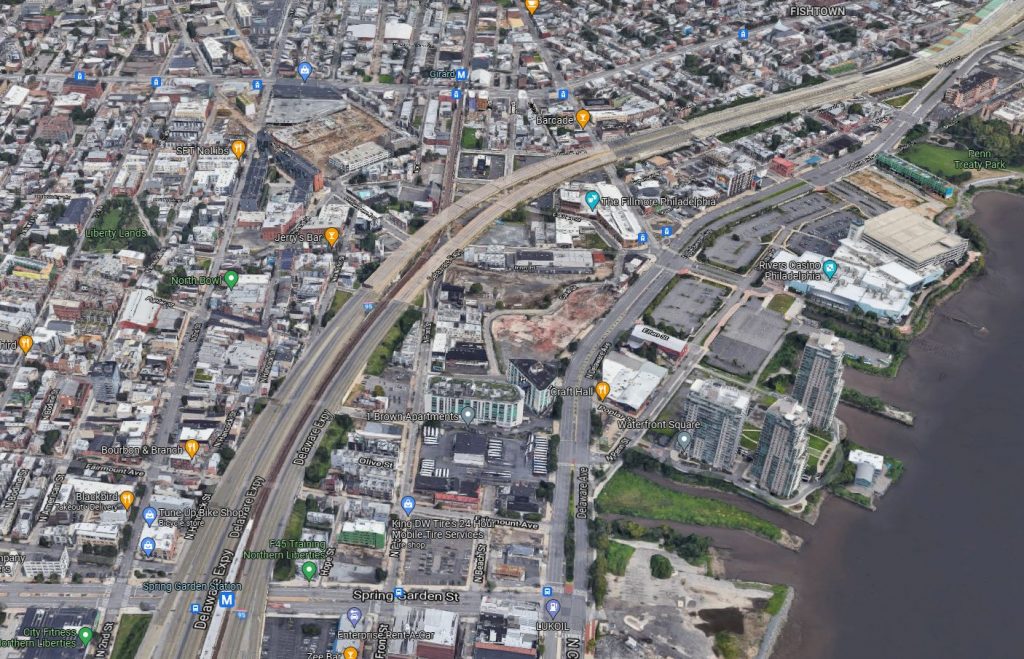
Northeast Northern Liberties. Credit: Google Maps
Numerous neighborhoods across the city were ravaged by postwar disinvestment, and industrial areas were hit particularly hard. Among these is the former manufacturing district that comprises what we refer to as Northeast Northern Liberties. The former industrial dynamo, situated just off the Delaware River waterfront, was brought to its knees with a three-strike combo in the postwar period. Modern facilities required large, single-level spaces that were becoming increasingly difficult to find in traditional urban neighborhoods, so they shifted out to the suburbs in a process that was facilitated via a reliance on trucking and the highway infrastructure. Most old piers, built for break-bulk cargo shipping, were incapable of handling containers that now dominated maritime trade. Lastly, manufacturing generally shifted overseas during the period, vacating blue-collar neighborhoods across America.
By the turn of the millennium, entire blocks in Northeast Northern Liberties laid vacant. Most notable among these was the former site of Schmidt’s Brewery, which still holds the record as the largest brewery in Philadelphia’s history. The docks along the waterfront sat in an equally derelict state, further disenfranchised and separated from the neighborhood by the massive viaduct of Interstate 95.
Over the past 30 years, Northeast Northern Liberties developed in starts and fits. In the 1990s, a series of dramatic skyscraper proposals were made at the waterfront, yet all fell through. The neighborhood’s fortunes improved by the turn of the millennium. Large developments such as The Piazza (located at the former Schmidt’s Brewery site), the Rivers (former Sugarhouse) Casino, and the three-towered Waterfront Square all took place around the late 2000s.
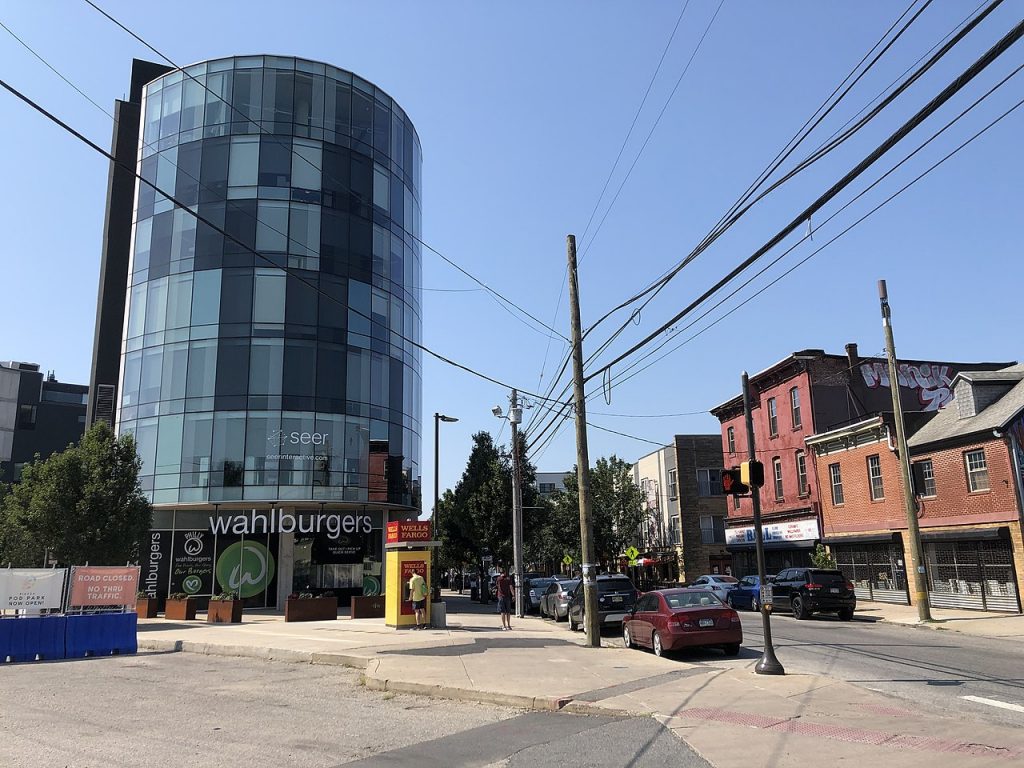
The Piazza at Northern Liberties. Looking south. Credit: Ii2nmd via Wikipedia
After an extended lull in development, the district is finally surging forward again. A mix of low-, mid-, and high-rise projects that are adding thousands of apartments and ample retail. The Piazza and the adjacent Liberties Walk offer public amenities such as open space and retail and eventually became a catalyst for the district’s current development boom. In a few years, Northeast Northern Liberties will become the central hub for the entire eastern section of Lower North Philadelphia and southern Kensington, manifested both at the street level with vibrant cultural, nightlife, and retail offerings, and at the skyline level, with multiple towers ascending above the area’s predominantly low-rise cityscape.
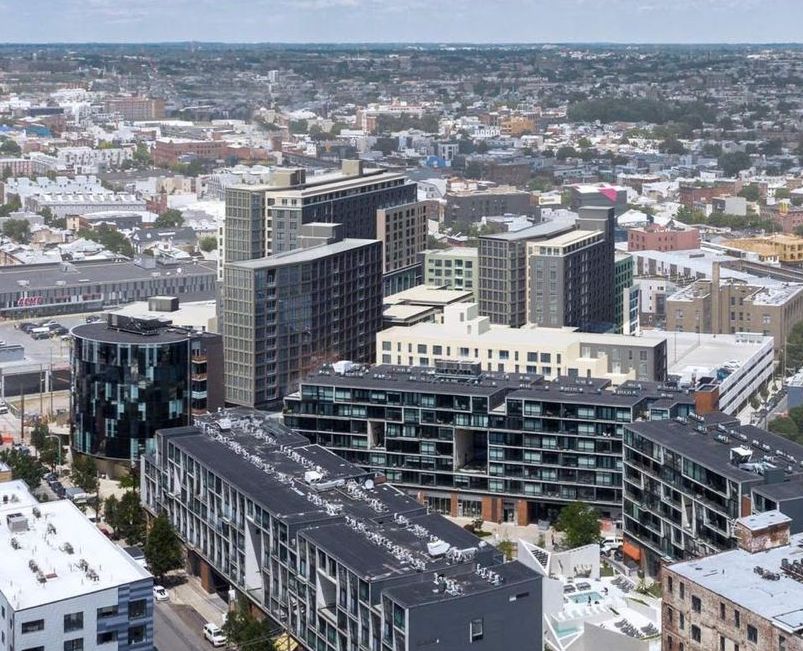
Piazza Terminal at 1075 Germantown Avenue. Credit: BKV Group
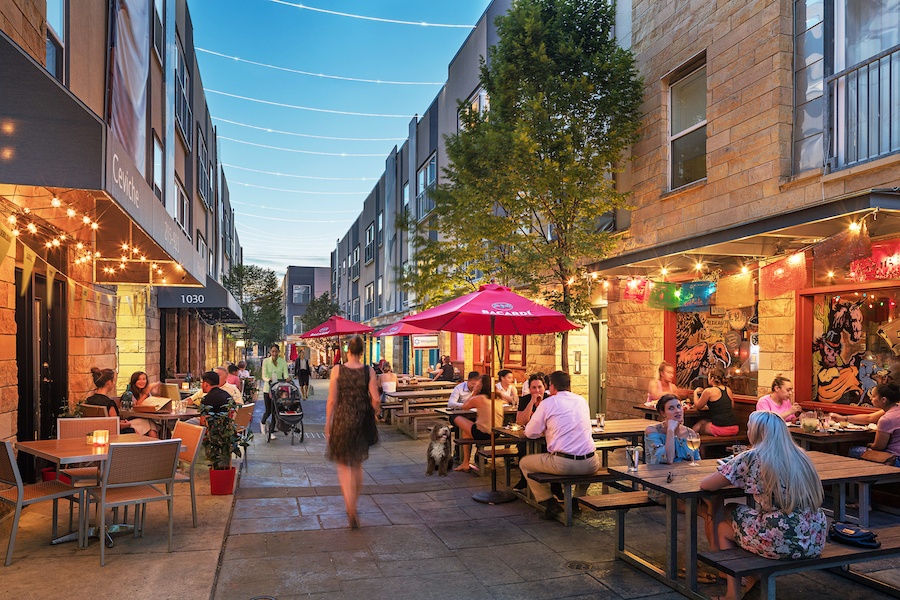
Liberties Walk. Credit: Post Brothers
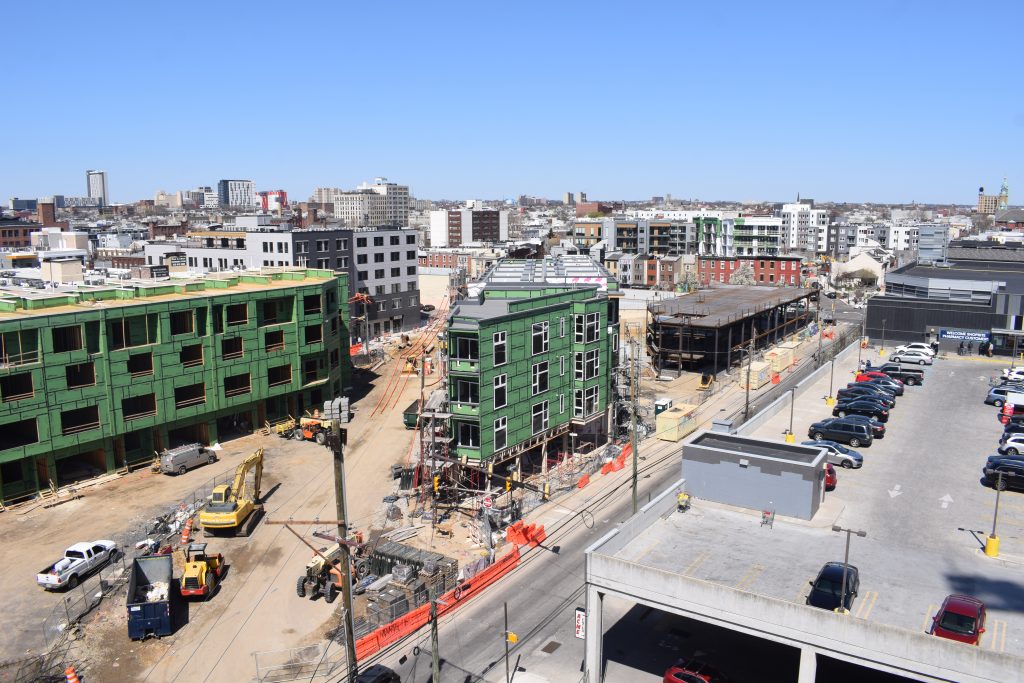
North Liberty Triangle from Piazza Terminal. Photo by Thomas Koloski
Below are some of the notable projects currently in progress or on the drawing boards in the area.
Piazza Terminal, 1075 Germantown Avenue
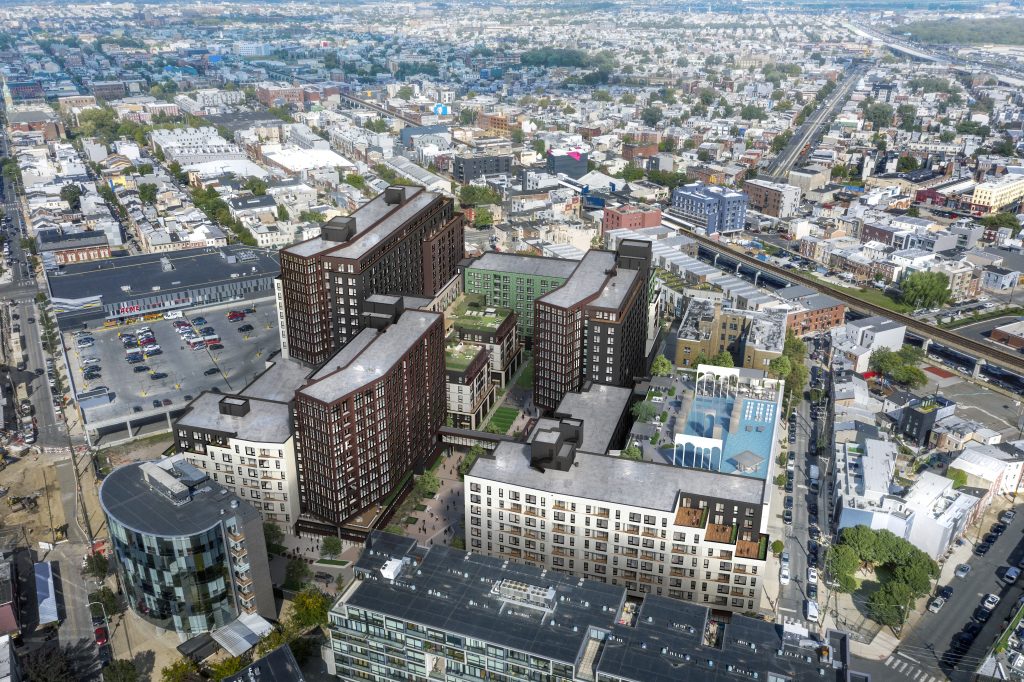
Piazza Terminal aerial rendering. Image via Post Brothers
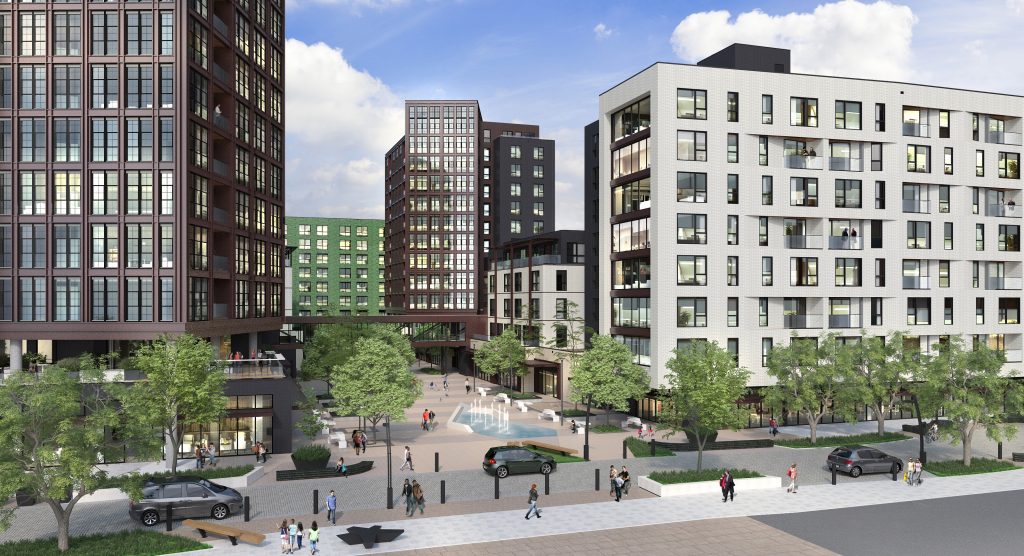
Piazza Terminal rendering looking northeast from Germantown Avenue. Image via Post Brothers
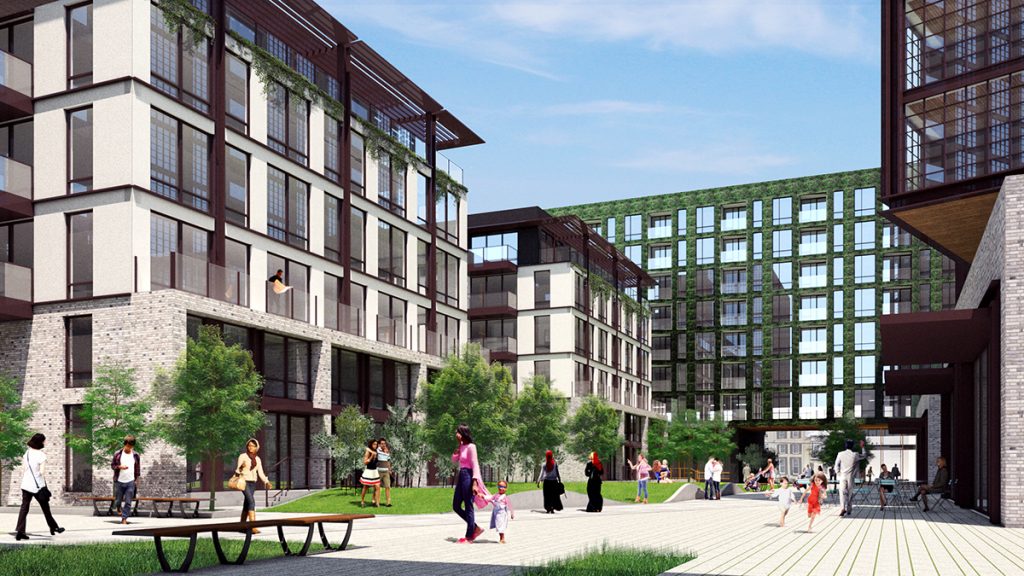
Piazza Terminal at 1075 Germantown Avenue. Credit: BKV Group
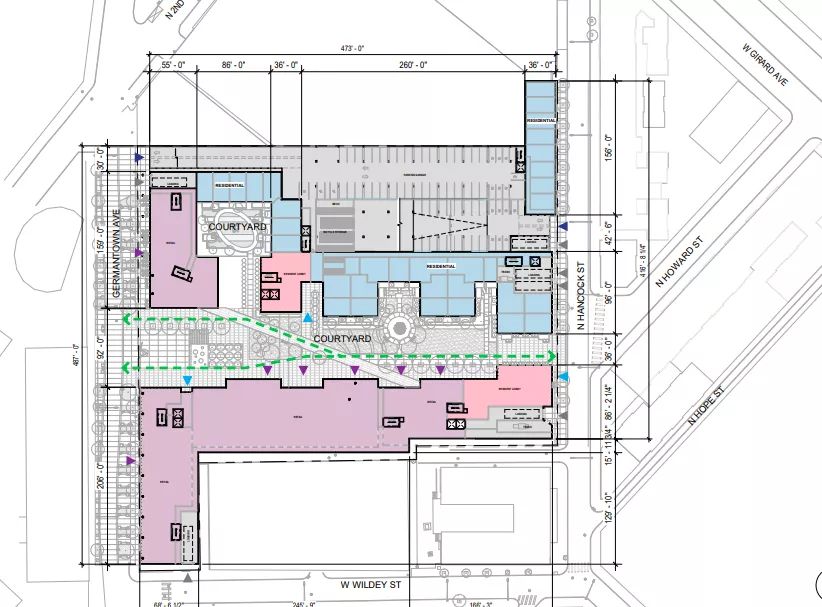
Piazza Terminal at 1075 Germantown Avenue, as proposed in 2018. Credit: BKV Group
1021 North Hancock Street
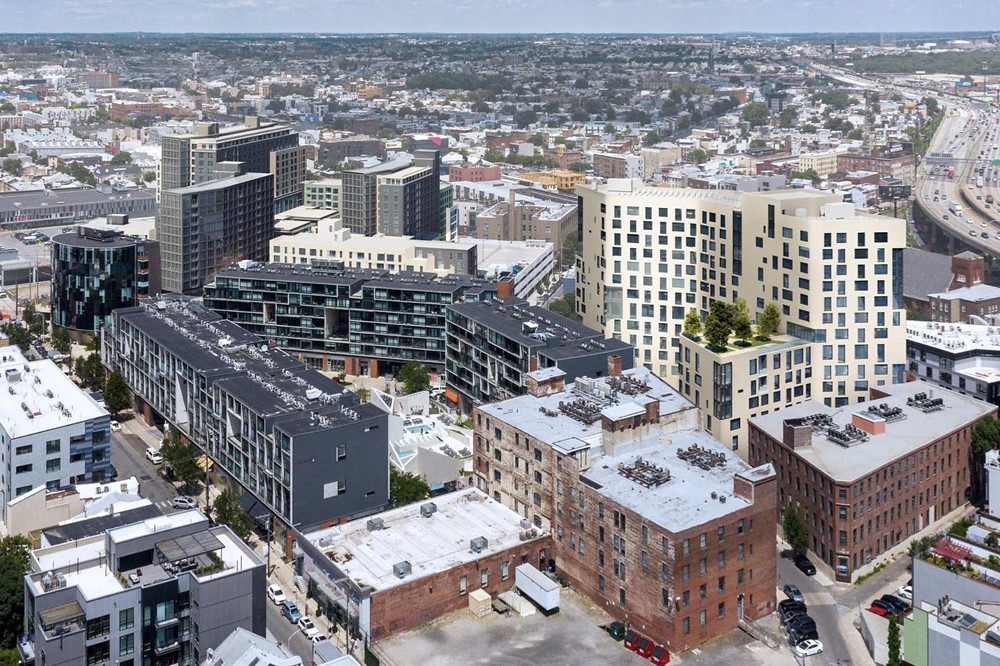
1021 North Hancock Street (white building) via Post Brothers
The Beverly, 1102 Germantown Avenue
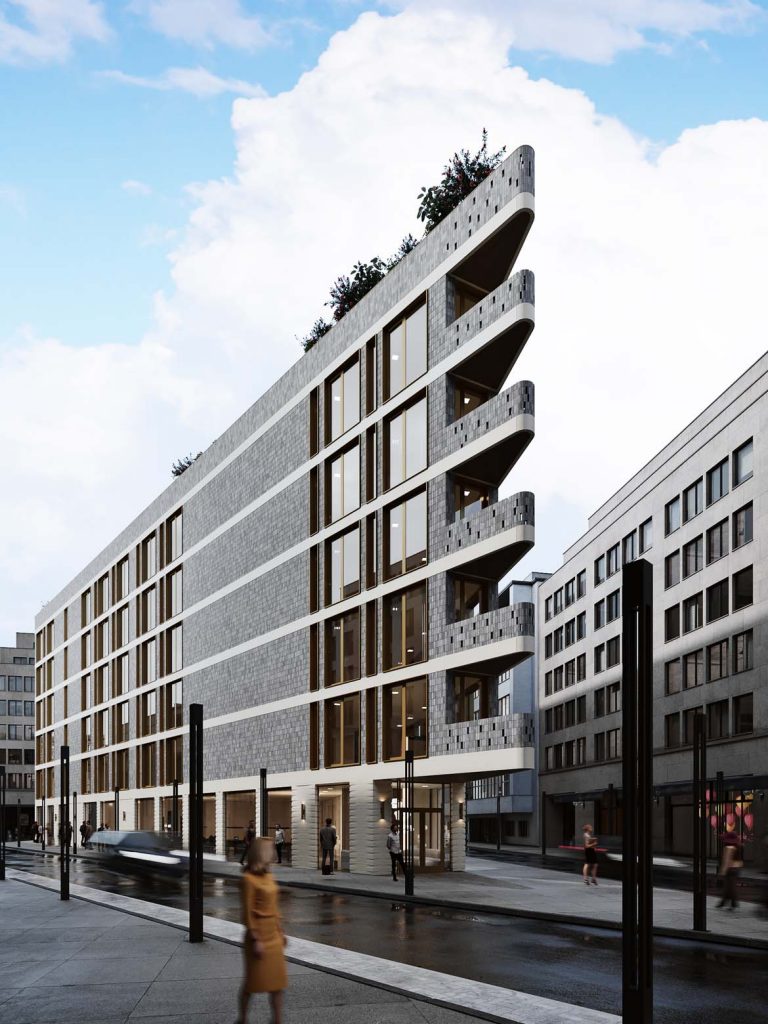
1102 Germantown Avenue. Looking southwest. Credit: the Stamm Development Group
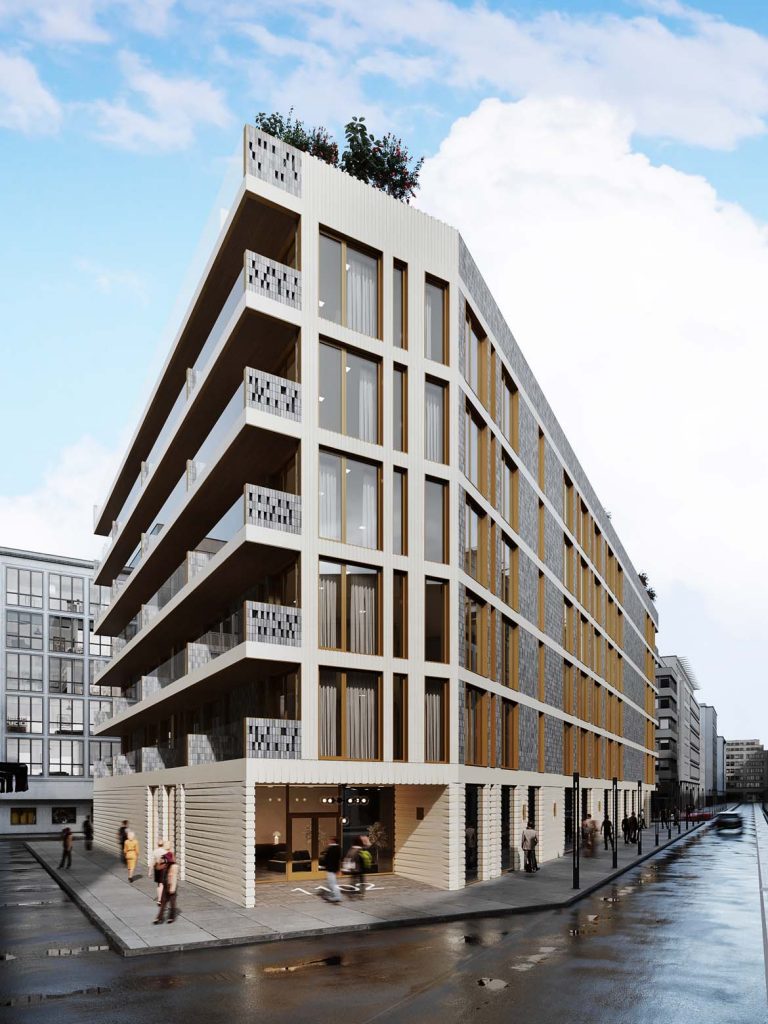
1102 Germantown Avenue. Looking northwest. Credit: the Stamm Development Group
North Liberty Triangle,1115-27 North American Street
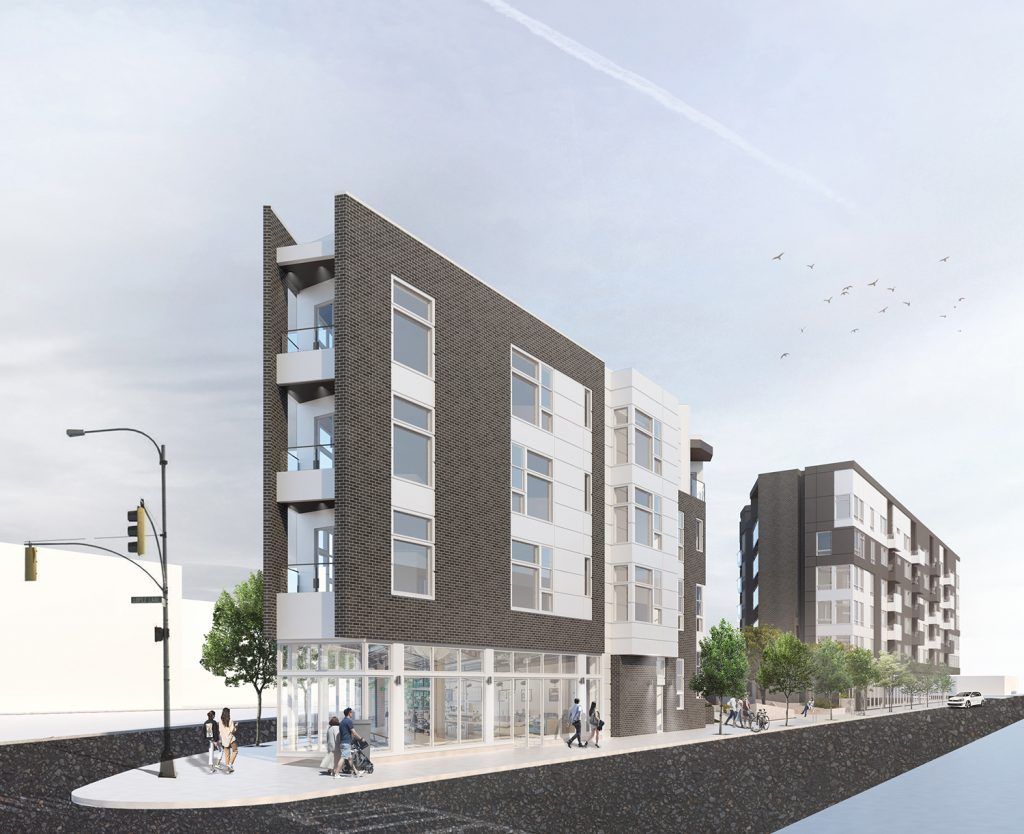
North Liberty Triangle at 1102-48 North 2nd Street. Credit: Streamline
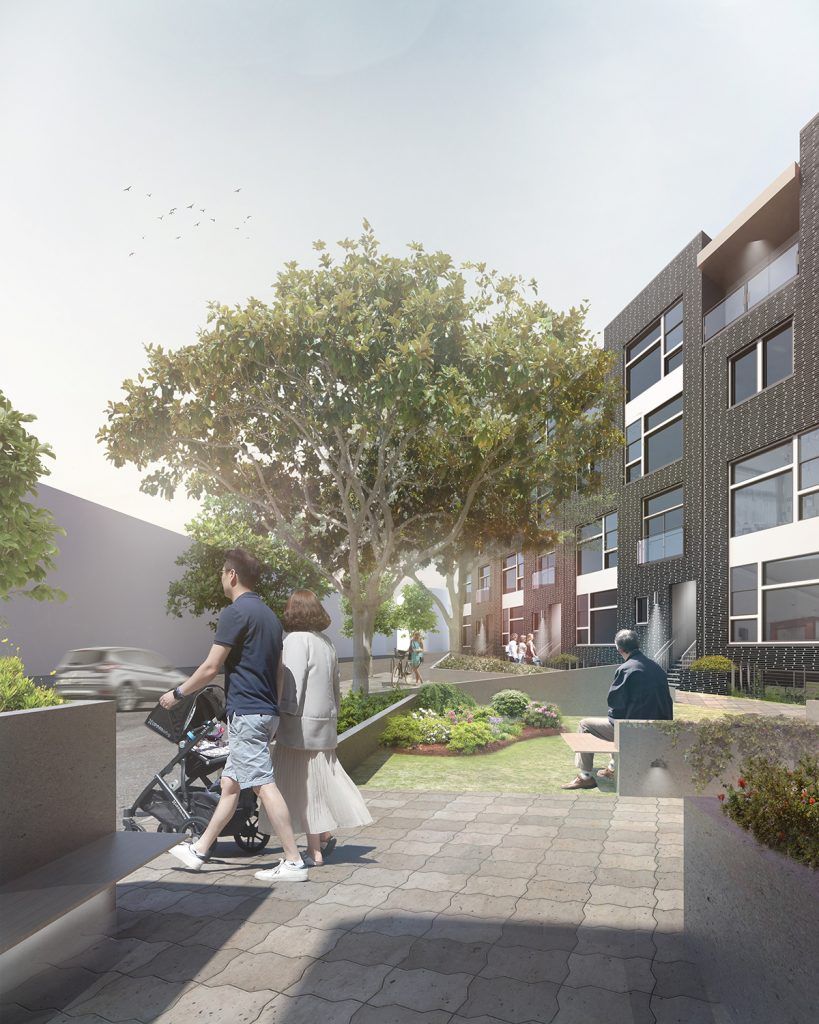
North Liberty Triangle at 1102-48 North 2nd Street. Credit: Streamline
700-730 Delaware Avenue
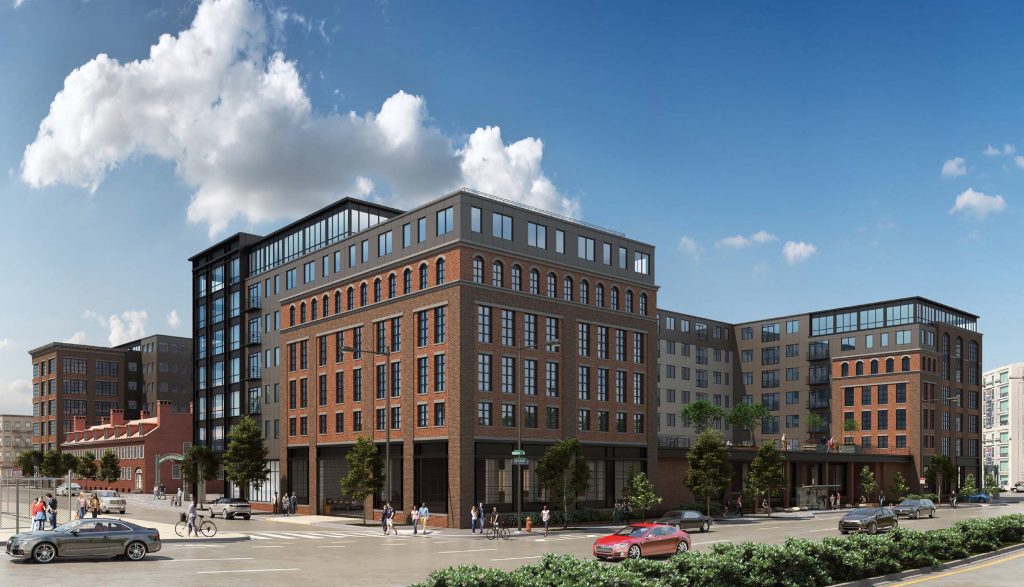
700-730 Delaware Avenue. Credit: JKRP Architects via the Civic Design Review
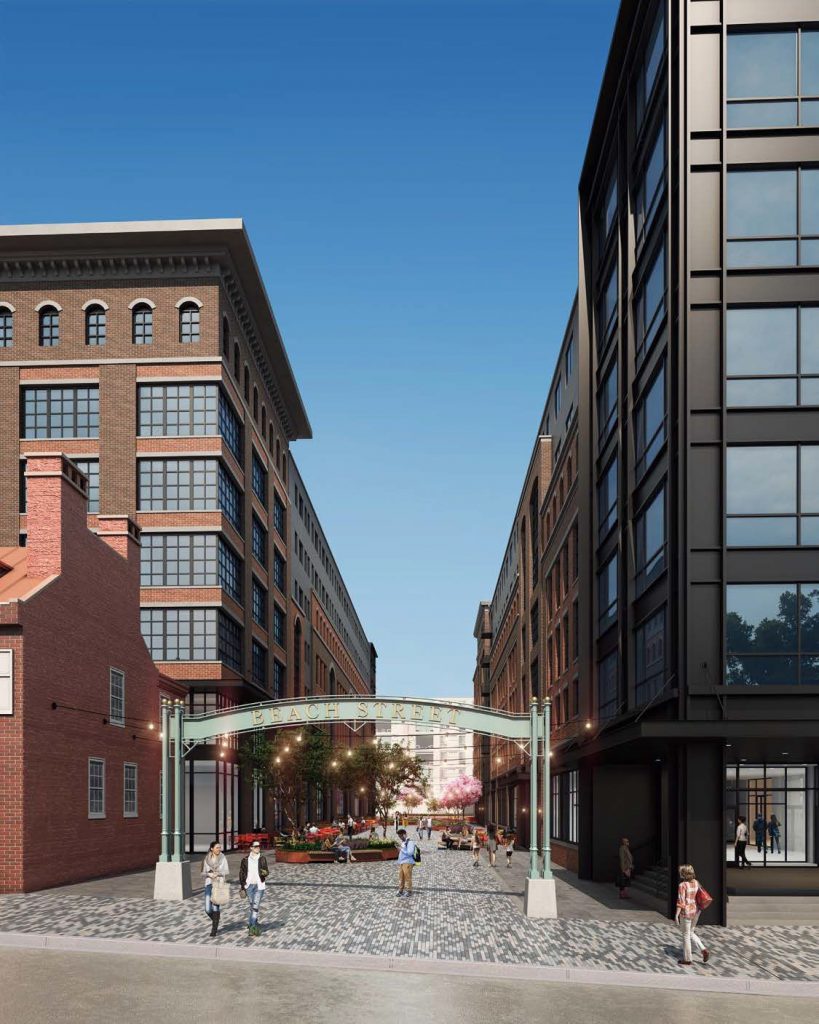
700-730 Delaware Avenue. Credit: JKRP Architects via the Civic Design Review
918 North Delaware Avenue
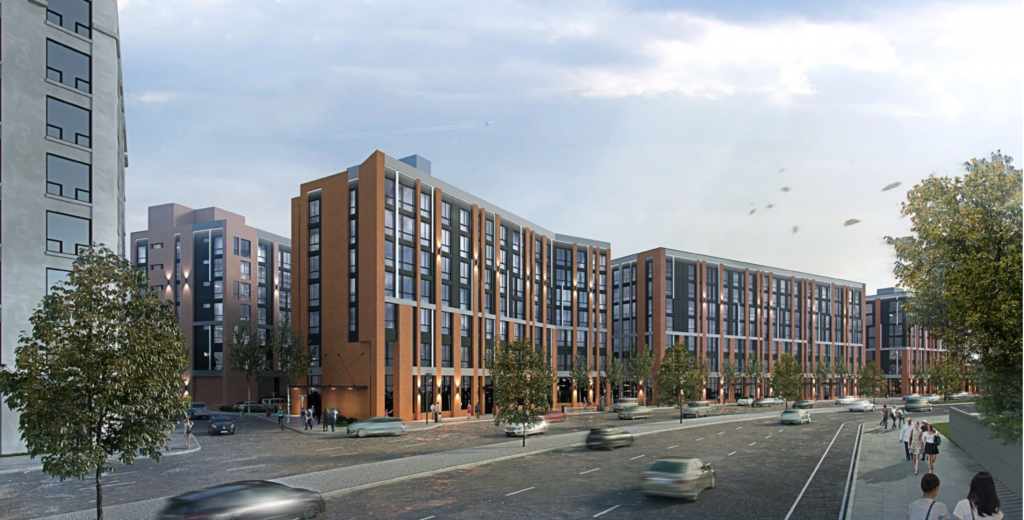
918 North Delaware Avenue. Credit: HDO Architecture
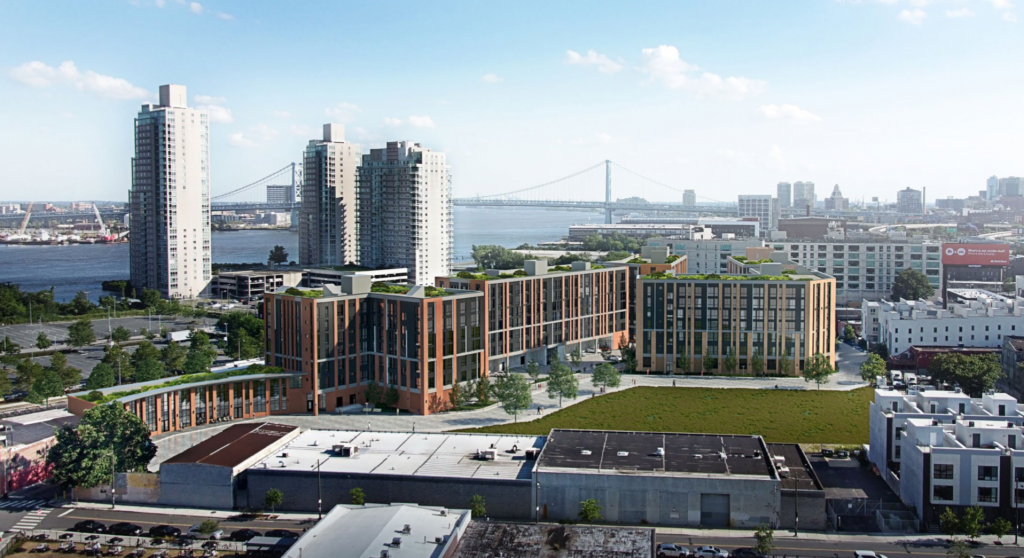
918 North Delaware Avenue. Credit: HDO Architecture
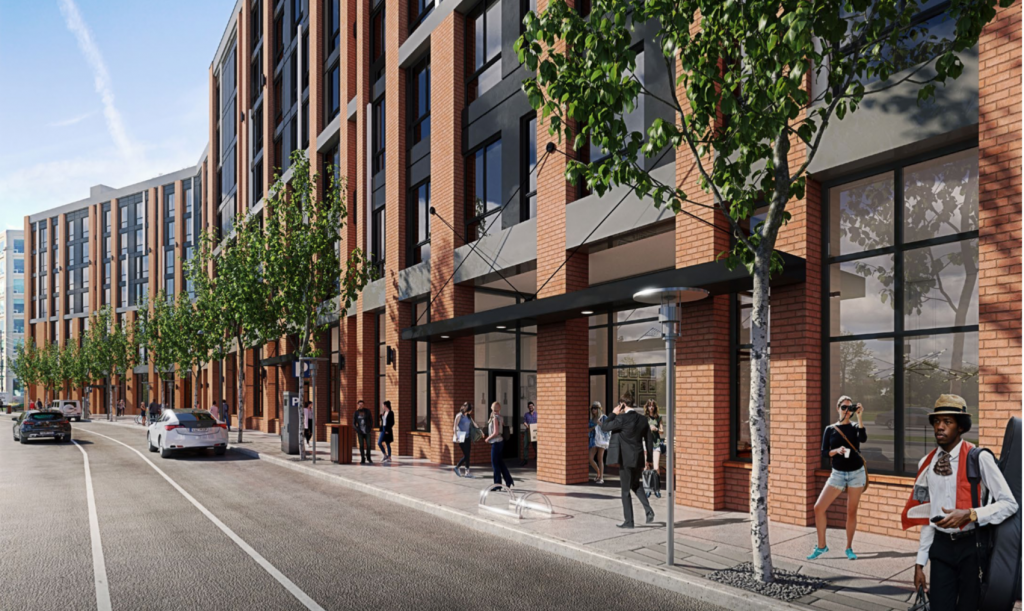
918 North Delaware Avenue. Credit: HDO Architecture
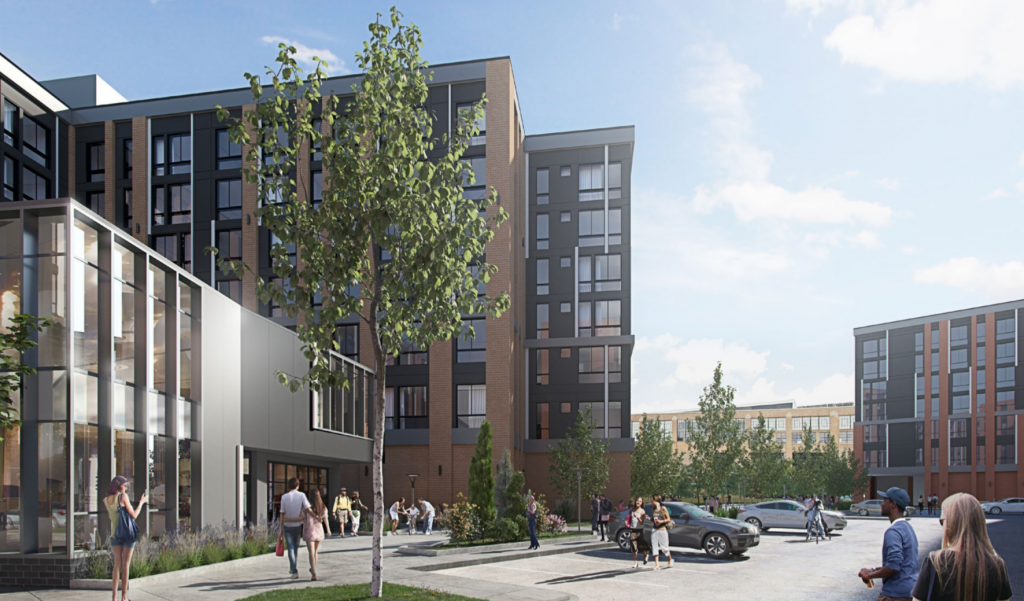
918 North Delaware Avenue. Credit: HDO Architecture
626 North Delaware Avenue
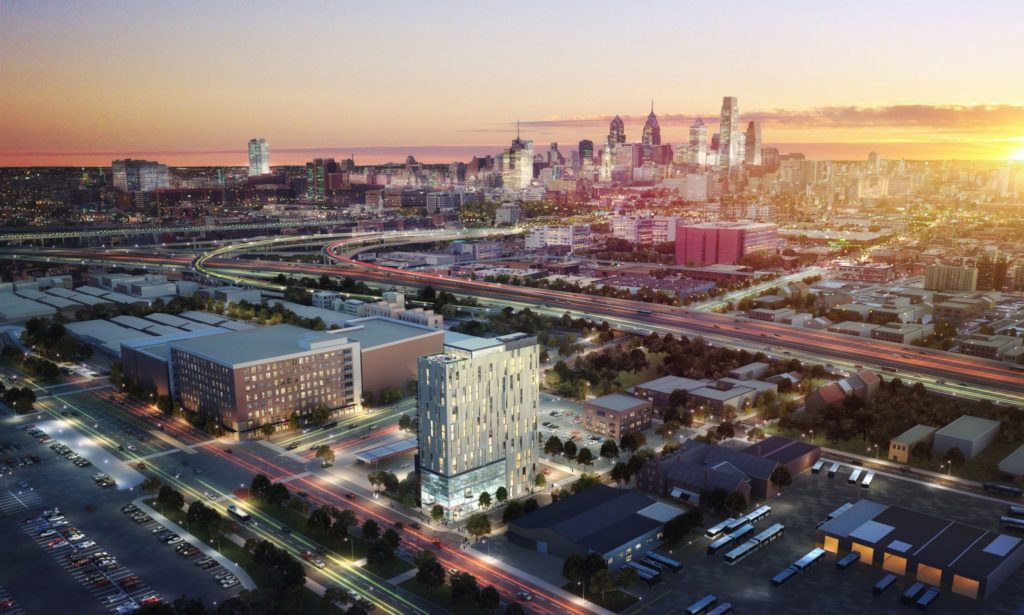
626 North Delaware Avenue. Credit: Cosica Moos Architecture
Bypassing the Barrier of the Interstate 95
As the waterfront continues to see new development, the hulking Interstate 95, combined with the elevated Market-Frankford SEPTA line below Germantown Avenue, will remain a serious barrier between it and an interior neighborhood. At the moment, the city has yet to present any serious plans to address its presence and how to reconnect the neighborhood to the waterfront. In the meantime, you may take a look at a conceptual scheme, suggested by the article author around ten years ago, which seeks to reconnect both halves of the neighborhood in a seamless manner.
Clearly, in reality the plan would have to address potential issues such as highway noise for residents. However, the intent is to showcase possible opportunities of constructive connective urban fabric over, under, and around a major piece of infrastructure, without requiring the astronomical expense and difficulty of removing a viaduct that holds both a major interstate highway and a subway line.
To reiterate, the following is only a conceptual vision that was never considered in any capacity as a concrete proposal.
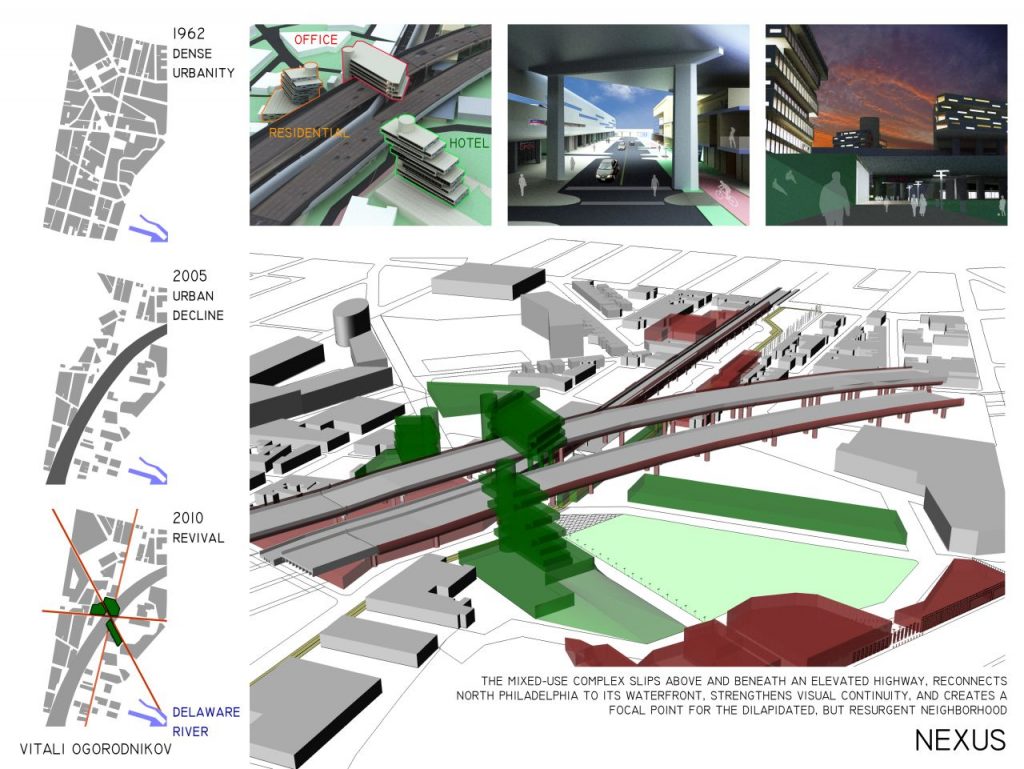
The Northeast Northern Liberties Connector Plan aka Nexus. Credit: Vitali Ogorodnikov
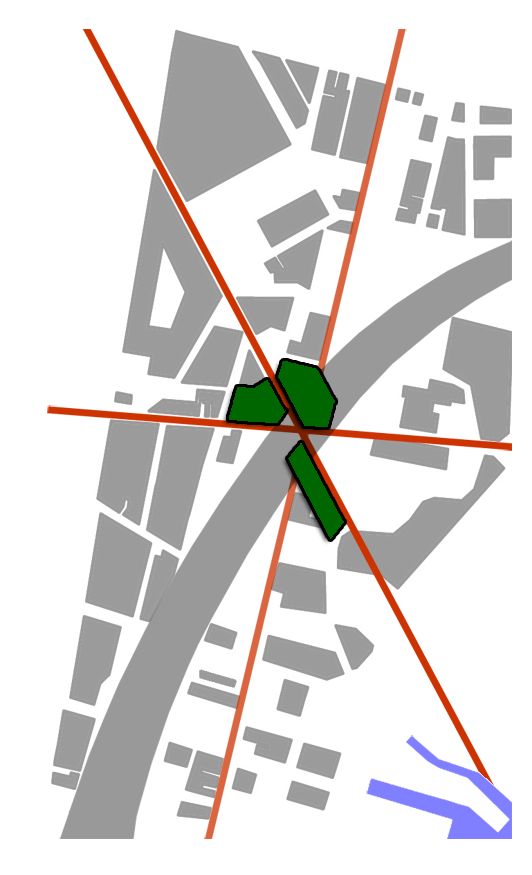
The Northeast Northern Liberties Connector Plan aka Nexus. Credit: Vitali Ogorodnikov
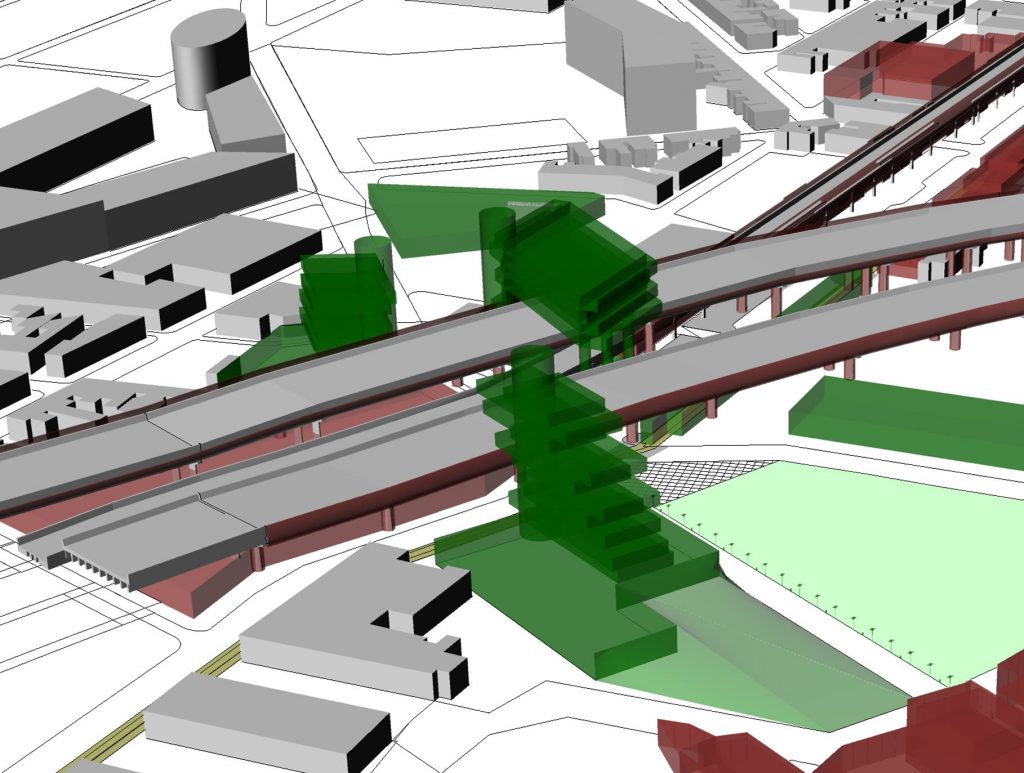
The Northeast Northern Liberties Connector Plan aka Nexus. Credit: Vitali Ogorodnikov
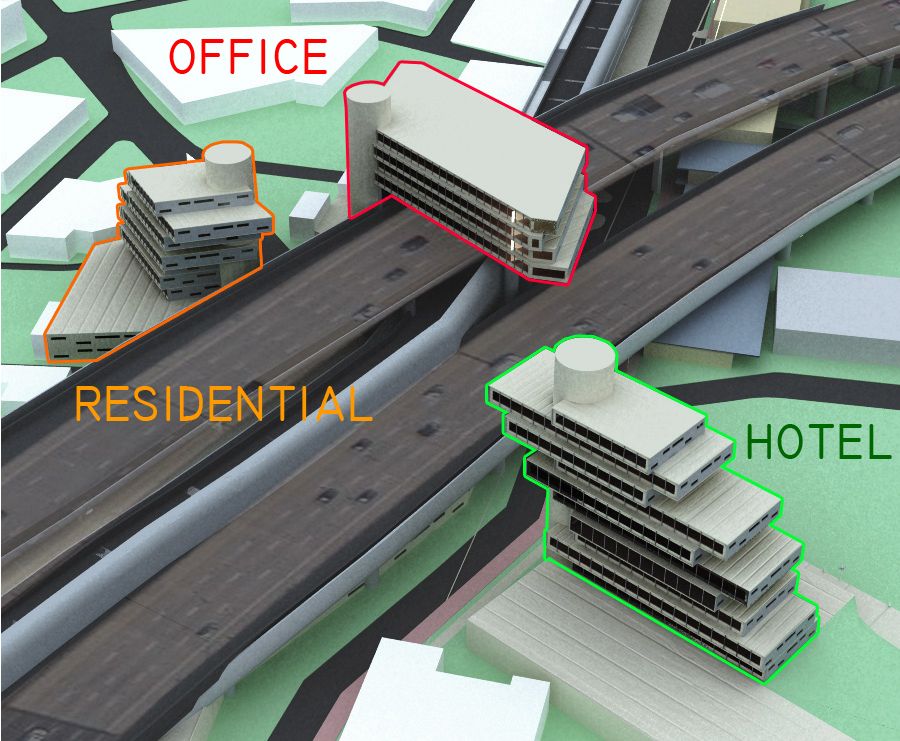
The Northeast Northern Liberties Connector Plan aka Nexus. Credit: Vitali Ogorodnikov
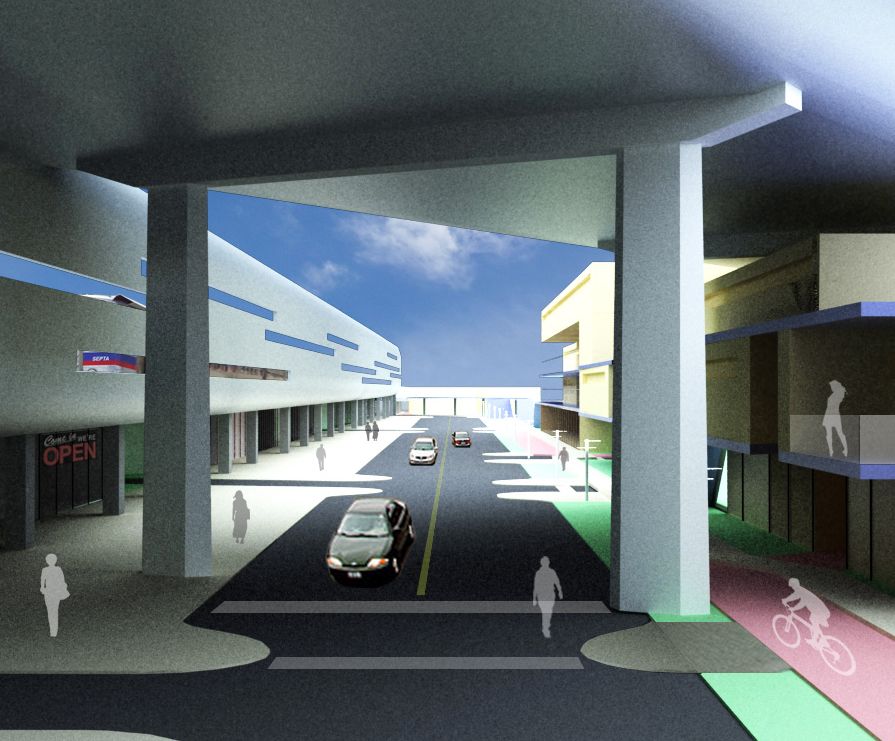
The Northeast Northern Liberties Connector Plan aka Nexus. Credit: David Radolovic, Vitali Ogorodnikov
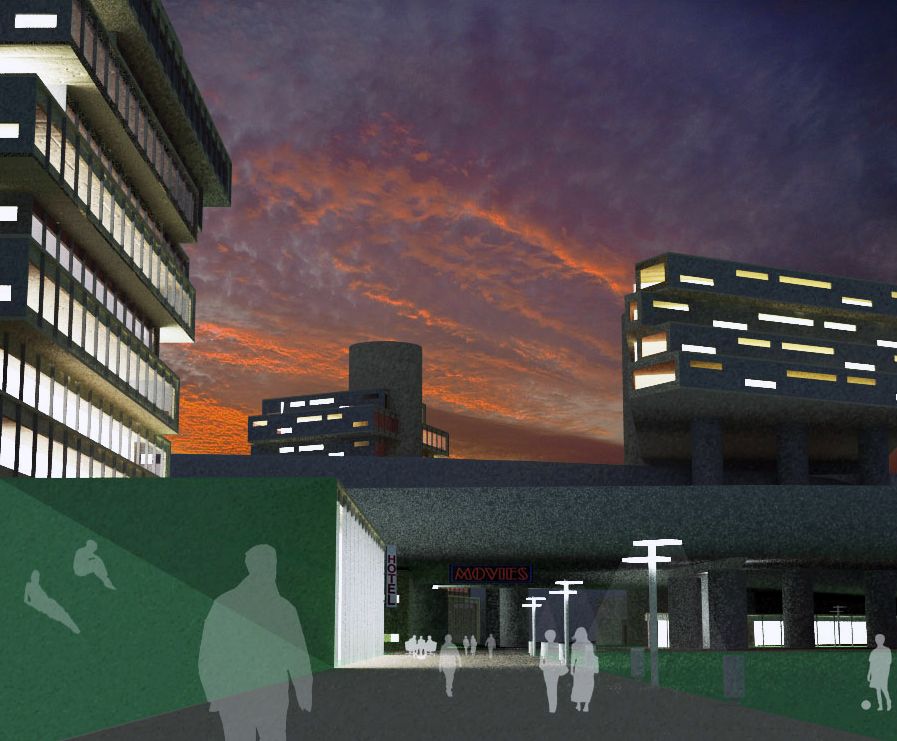
The Northeast Northern Liberties Connector Plan aka Nexus. Credit: Vitali Ogorodnikov
An Emerging Identity: Cohocksink, perhaps?
For over a decade, The Piazza and the adjacent Liberties Walk have served as a hub of cultural activity and a popular venue for markets, festivals, and other events. Already far removed from its recent, derelict, post-industrial past, Northeast Northern Liberties is already already holds a special place on the Philadelphia cityscape. The is rapidly becoming a shared focal point for adjacent areas such as the rest of Northern Liberties, Fishtown, the greater Temple University area, and Center City. Furthermore, it is perfectly poised to act as North Philadelphia’s primary gateway to its long-neglected waterfront.
The incoming development will extend Liberties Walk in either direction and solidify it as a public destination with new retail and open space. Thousands of new apartments will further establish the district as a dense, round-the-clock neighborhood.
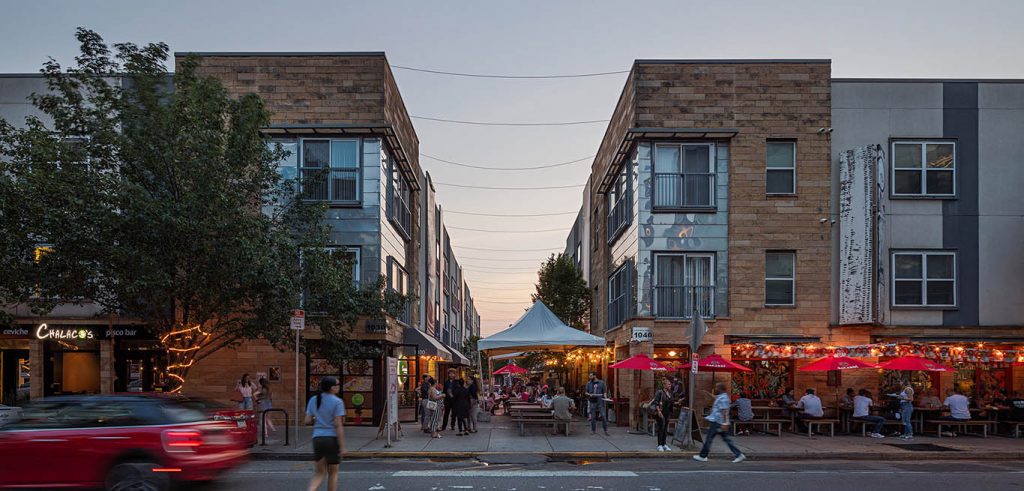
Liberties Walk. Credit: Post Brothers
The urban node continues to develop its own identity distinct from the surrounding neighborhoods, yet it still lacks any particular designation aside from our (admittedly awkward) Northeast Northern Liberties moniker. Time will tell what the area will eventually be called – perhaps Schmidt’s (after the former brewery at the site), NoENo (as a questionable callback to the emerging SoNo portmanteau for Southern Northern Liberties), Downtown Nolib (another admittedly weak suggestion but the pickings are slim), or any other name that may emerge.
Until then, Northeast Northern Liberties, bounded by the Delaware River, Spring Garden Street, North 2nd (or North 3rd) Street, and Girard Avenue, remains a district with an ever-growing sense of identity yet still no hint of a coherent name. However, instead of applying forced neologisms, perhaps we ought to look back to the area’s roots and let it take the name of Cohocksink.
The designation would continue the city’s and region’s long-standing tradition of honoring the local Native American legacy; names like Susquehanna, Allegheny, and others spring to mind. In this case, the neighborhood name would come from Cohocksink Creek, named by the local Lenni Lenape Native Americans and translating as “pine lands.” The creek meandered through the area until it was put into an underground culvert in the 1850s. The stream continues to flow to this day, following the serpentine course beneath Bodine, Laurel, Hancock, Allen, and Canal streets, beyond which it joins the Delaware River just to the south of Waterfront Square.
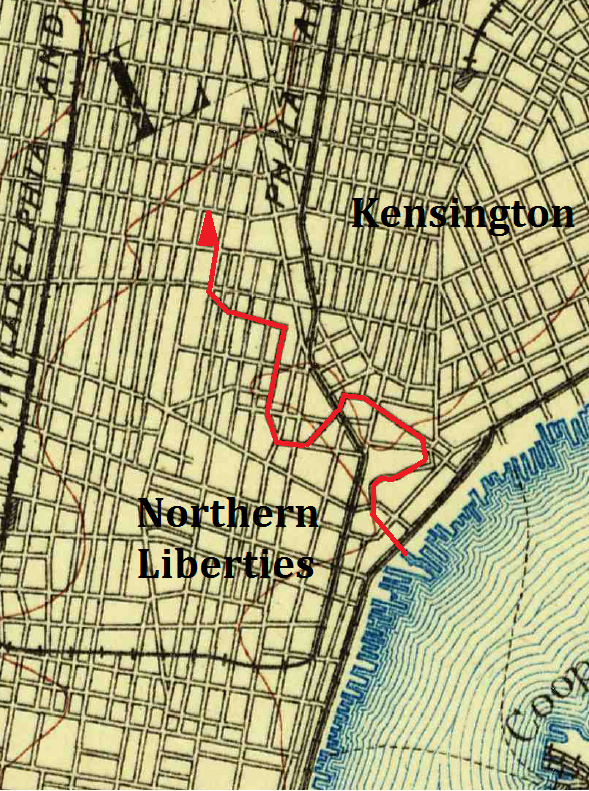
Cohocksink Creek. Credit: Wikipedia
Although the area retains a number of manufacturers, the industrial heyday of Northeast Northern Liberties has sailed into the past, much like the masted ships that once lined its piers. In its place rises a brand new urban hub that is bound to delight locals and visitors alike for years. Yet as we look forward to a bright new future, when it comes to choosing a name for the emerging district, perhaps we ought to take up one that has been here all along, right beneath our feet.
Subscribe to YIMBY’s daily e-mail
Follow YIMBYgram for real-time photo updates
Like YIMBY on Facebook
Follow YIMBY’s Twitter for the latest in YIMBYnews

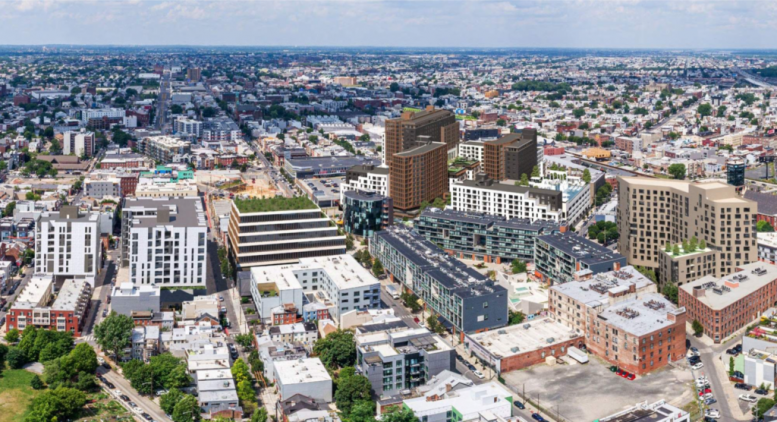

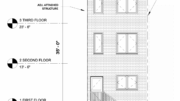

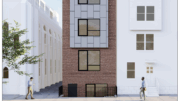
You have a shopping corridor along the Market-Frankford Line, what more do you want?
Wow it’s almost like 95 is a barrier or something.
Interstate 95 is a highly desirable feature if the city can provide zoning to support malls and transportation services.
There is so much tremendous potential here.
A skilled writer can easily take advantage of this enormous opportunity of a lifetime!
Just leave the name alone. Northern Liberties is already 1 only sqaure mile (or less depending on where you define the border). What is the point in trying to break it up into more microcosm neighborhoods?
The origin of the name of the neighborhood isn’t some trendy neologism, it’s historical in its own right from the 17th and 18th centuries when it was a district of land grants for property owners residing in the original city of Philadelphia. The Cohocksink was merely the northern boundary of the Northern Libs district separating it from Northern Liberties township (which in turn was broken up into Kensington, Richmond, Bridesburg, etc before the consolidation act).
The sliver of the current neighborhood now cut off by I95 and/or north of Cohocksink isnt large enough to justify its own identity, despite the high density projects proposed/under construction there
We just spent a billion dollars renovating the Frankford El with a thirty year life expectancy. The argument revolves around capping I-95 from the Ben Franklin to South Philadelphia as cars accelerate up the southern portion of I-95. The question is are we ready to start capping I-95 with what finances we have right now. They can talk over this for decades without starting construction as there is no money to start the project. Best option may be capping a small portion over I-95 to make everybody happy. Mayor Kenny has nothing to bring to the table and we have billions of construction work all the way south from Fairmont Station and it won’t be done until I am a hundred years old in 2053!
We talked about subway extensions in 1921 only to get nowhere due to WWI and WWII emeshed with the great depression between the two world wars.
Germany’s reckless behavior caused allot of problems throughout the world.
However, city leadership is where the buck stops and no excuse will satisfy the general public.
Here’s a link to an interesting group that is concerned about the amount of current building demolitions, especially historic structures. There’s a necessary balance between progress and wholesale, unprotected destruction of a city’s legacy:
https://www.phillyvoice.com/photo-exhibit-demolished-buildings-philadelphia-stop-demolishing-philly-bradley-maule/?mc_cid=acee33383a&mc_eid=b0efa91647
Cohocksink Creek, being part Native American this seems like a good idea to reclaim the original names of area, this is a common Philadelphia tradition and it makes Philadelphia unique among American major cities.
I wonder if its possible to reopen Canal Street and make it a canal and inner city harbor, in Britian old rivers that were covered over are being reclaimed and this would be a unique candidate.
My spouse and I have been in Northern Liberties for 25 years and agree with those who say leave the name alone. The name is part of our identity.
There are many long-time residents in Northern Liberties who don’t agree with the suggestion and it will confuse people for years to come.
The idea of changing the name, breaking Northern Liberties into multiple names, or changing the “boundaries” has come up in the past and it normally starts with realtors or contractors who can leverage the change for marketing purposes.